A One-Stop Guide to Mcleod Ganj
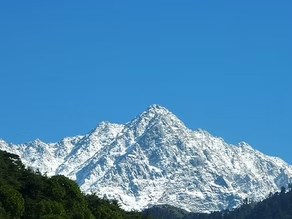
Source: The beautiful hill station of Mcleod Ganj, situated in Himachal Pradesh, is nestled at an altitude of 1700 meters and sits at the lap of the enchanting Dhauladhar ranges. Mcleod Ganj, also known as Mini Tibet, is rife with rich Tibetan culture, beautiful monasteries, and abundant scenic beauty. The vibe here is incredibly tranquil and serene, attracting thousands of people from all over the globe. Mcleod Ganj also is the seat of the 14th Dalai lama and serves as the center of the Tibetan government in exile. Owing to the strong Buddhist and Tibetan influence here, this location is also known as Little Lhasa. This post will give you a guide answering all your questions about Mcleod ganj and the amazing locations to visit here. How to get to Mcleod Ganj Mcleod Ganj is easily accessible, and you can reach the location via Air, rail, or by road. By air: The closest airport to Mcleod Ganj is the Kangra airport which is 17 km away. From here you can take a cab to reach the hill station of Mcleod Ganj. By Rail: The nearest railway station is the Pathankot railway station which is 89 km away from Mcleod Ganj. You can take a cab or a bus to cover the rest of the journey. It is advised to take a bus though as the distance is long and cabs may be very expensive. By Road: You can also visit Mcleod Ganj from Delhi via cab or Volvo bus. The distance from Delhi to Mcleod Ganj is about 477 km and takes approximately 10 to 12 hours to cover. By bus the cost for travel may range from Rs 2000 to 3500 but is way less than a cab would cost which is approximately Rs 5000 to 10000 depending on the type of car. The best mode of transport in Mcleod Ganj The Best mode of transportation in Mcleod Ganj is using auto-rickshaws or walking. The autos are a cheaper mode of transportation than cabs but depending on where you stay, even autos may not be necessary. Autos and cabs are easily available throughout Mcleod Ganj. When to visit The best time to visit Mcleodganj is between March to June, when the location is pleasant, or between November and February, when the view of snow-capped mountains is absolutely serene. Where to stay: There are various hotels, guest houses, and hostels in McLeod Ganj for every budget and requirement. From high-budget resorts to beautiful homestay options. You can stay in resorts and hostels near Bhagsu, along with the main market, and near Dharamkot depending on your preferred location. However, as these locations are near each other you should choose the location which offers the best view or that is most convenient to you. Read more about the travel experience from McLeod Ganj in the blog written by Medhavi Davda. 5 Locations you can not miss!! 1.Tsuglagkhang Complex Source: The Tsuglagkhang Complex is one of the holiest Buddhist sites and is wrapped in spirituality and serenity. This location is visited by hundreds of pilgrims every year and offers an insight into the beautiful Buddhist heritage. The complex consists of the Tsuglagkhang temple, the Namgyal Monastery, Tibetan Museum and has multiple shrines with beautiful statues of Gautam Buddha, Guru Rinpoche, and Chenrezig. a.) Namgyal Monastery This monastery is said to be one of the largest monasteries in the world, and the view of the Dhauladhar range from here is truly magnificent. The monastery was set up in the 16th century and now is the seat of the 14th Dalai Lama. The interiors of the monastery are beautifully decorated with paintings, pictures, and sculptures and make you really appreciate the beauty and simplicity of the Buddhist culture. You can see many Buddhist monks meditating and chanting, and it is truly a serene and rejuvenating location. b.) Tibetan Museum The museum situated at the complex offers a peek into the Tibetian culture and the struggles endured by these people during the Tibetian migration. The museum is built with classic Tibetian architecture and houses many beautiful paintings, images, pottery, and sculptures. There is also a souvenir shop inside where you can buy gorgeous handicrafts and artifacts. c.) Tsuglagkhang Dalai Lama Temple Visiting the temple is a truly rejuvenating experience, with monks meditating and chanting at the temple truly creates a mesmerizing aura. The temple also houses the spinning wheels, which bring good karma for whoever spins it. The temple is a great spiritual experience that you must not miss. Cost: Free to visit Visiting timings: 5 am to 8 pm. Ideal duration: 1.5 to 2 hours. How to reach: Hire a private cab or auto-rickshaw to reach the complex easily from the city which is just 6 kilometers away. If you want to enjoy the beautiful surroundings of the monastery then you can choose trekking to get to this location too. Restraunts near here: After visiting the complex you must visit Lung-Ta, a great Japanese restraint around 1 km away from the complex. The ride via auto or cab should take 5 mins and you can enjoy delicious Japanese cuisine at this location. Definitely try the sushi. 2. Bhagsu Nath temple and Bhagsu falls: Source: The Bhagsu Nath temple dedicated to Lord Shiva is perched at 1700 meters above sea level and surrounded by lush greenery and a beautiful view of the Himalayan terrain. The freshwater springs here are believed to be sacred and have healing and medicinal properties. From the temple, you can trek up to the Bhagsu Nath falls; a 20 meter falls surrounded by rocky cliffs. The trek to the falls is a little tough and requires a moderate fitness level, but the waterfall location’s view is truly serene. You should definitely take a quick dip in the chilling water
Changing travel trends amidst covid-19
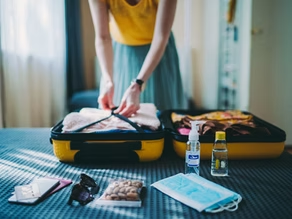
Just when we started to believe that things were going back to normal, the second wave of coronavirus hit us hard and harder this time. This raises the question that, are things ever going to be normal again? We are stepping ahead into an uncertain future, and the travel industry is preparing for the new era of travel, where everything will be changed and brand-new. Here are some of the changing trends driving the future of travel post covid. Domestic travel over international travel Domestic travel gained a lot of momentum during the pandemic, and this trend is here to stay. Keeping in mind the shorter distance, domestic travel is a safer choice. Also, looking at the current situation, international travel will be more expensive, making domestic travel an ideal choice. Staycations Staycation is when an individual or family stays at home and takes part in leisure activities at places within the day trip distance from home. People are starting to prefer staycations in their own city or hill stations and beaches close to the city, over long holidays as a means to ensure their safety. You can experience a slower pace of life while being close to your home. Road trips over local transport With social distancing being the new normal, the rise of public transport is going to be very hard. Road trips are a safer option to take up. People prefer taking their own car, or private taxis to avoid physical touch. Growth of sustainable and slow travel With the rapidly deteriorating environmental conditions, more and more people have become more conscious and are now undertaking steps to mitigate the impact of their travel. Travelers are looking for richer immersive travel experiences to unwind, explore, and connect with nature instead of just rushing around and seeing many places. Digital travel experience Amidst the pandemic, many hotels and resorts made a shift to the digital world to ensure that all guest needs were met virtually to create a safe environment for the travelers as well as the working staff. The digital experience has been transformational for leisure and business travelers, and this experience trend is digging in for the long haul. Many operation-related activities are going to be digitized, enabling contactless services. Homestays gaining popularity There’s been a growing demand for long-term homestays. With offices shut and the rise of remote work, many are leaving their home offices for the chance of working from a picturesque wellness holiday destination. Once-remote lodges, low-cost hostels, and luxury villas that prided themselves on being off the grid are amping up internet speeds and offering free wi-fi and backup data dongles with their rooms. Solo travel pacing up Another major change the pandemic has brought into people’s life is the importance of self-discovery and personal growth. Travelers are looking for more ways to spend quality time with themselves. Moreover, solo traveling also reduces the chance to get infected and gives you complete control over the itinerary. The pandemic has changed the way we travel as new travel trends continue to rise. We must adapt to them, but also at the same time take proper precautions, practice social distancing, wear masks at all times, wash our hands regularly. STAY HOME, STAY SAFE!
Ultimate Guide to Tourist Activities during Coronavirus
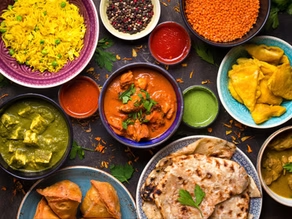
Coronavirus has made sure that we should be prepared for anything at all. Traveling has completely changed and will not be the same unless we get a worldwide vaccine that can be available to the masses. But since the wanderlust in us is never going to die and our want to travel and explore is always alive, we need to find new ways to tackle this paradox. In the previous few blogs, we’ve highlighted how to choose the right transportation, accommodation, and destination but what can we really do during our travel excursion? Social distancing has made it difficult to just get out of your accommodation and visit the place you’ve just searched for on the internet, you’ll have to make sure that the place is safe to visit and whether is it even open or not. This blog gives you a general idea of what places you can visit or include in your itinerary during a travel excursion with the norm of social distancing still in play. 1. Monuments The most popular tourist attractions in the world have always been magnificent monuments rich in heritage and culture. To explore this grandeur of unreal structures will be somewhat possible during social distancing as well. Most of the monuments have been allowed to open to the public under strict rules to ensure that the virus is kept in check. Only those monuments that are not in the containment zone have been allowed to open with regular sanitization drives and having sanitization points at each corner. One of the most iconic monuments in the world, Taj Mahal. To ensure more safety, no tickets will be sold on physical counters, only e-tickets or digital tickets are available for entering the monuments. This will ensure no contact and also help in limiting the visitors entering at one time by assigning specific time slots. Even the parking and cafes & kiosks will only accept digital payment instead of cash payments to ensure no contact. Entry and exit points have been marked separately by the monument authorities to ensure social distancing at each point, and a traveler will only be allowed to enter the premises after thermal checking of symptoms and hygiene check using sanitization points. Moreover, lights and video shows that created large crowds will be halted completely till further notice to ensure social distancing. 2. Adventure Activities Most of the adventure activities had only stopped when our country was in complete lockdown. When you think of most adventure activities, they generally involve a sense of social distancing since only a few people opt for them. These activities were not possible earlier only because no travelers were visiting due to the inability of traveling. Now, adventure activities are safe to choose and will have an even higher demand in the socially distanced world. Loved by most travelers, rafting is suitable for all adventure enthusiasts. Adventure activities are open in all the non-containment zones as with any other essentials. There has been a drop in travelers and thus people opting for these activities but they are completely safe and provide a respite to a person who has stayed home and washed utensils as their most adventurous activity of the day. I would recommend going for river rafting and camping by the river with a serene night trek in Rishikesh for this time but if you are planning to really get that adrenaline rush out, paragliding at Bir Billing is another great option. 3. Gardens/Nature Park Gardens have been opened a while back for the local public as well as tourists with the limitation of wearing masks at all times. Not adhering to wearing masks attracts a penalty that is applicable in any public area. Social distancing is a little hard to be maintained at these parks as they attract a lot of people every day. It will be advisable to not to visit these parks unless you are taking strict precautions and maintaining your distance from other visitors. Waterfalls are a traveler’s paradise and open for public Some nature parks have been opened in the country for the tourists but most of the wildlife sanctuaries have been closed for the safety of the animals as it is still unsure as to how this novel coronavirus affects different species. Also, since a lot of visitors drop by at these parks, it will be difficult to maintain social distancing while offering a great experience. Other naturally occurring tourist attractions like waterfalls, beaches, and mountains are open for visitors and are safe to visit but some of these attractions do expect a lot of visitors so do maintain your distance and wear a mask at all times. 4. Markets/Mall Whatever kind of traveler you are, you always need to find markets for shopping. It can be shopping for yourself or just souvenirs to take home but visiting a market is the most common practice when visiting a new place. Markets and malls have been opened by the government with just a few restrictions in place. Open markets are present everywhere in India and vendors love to bargain All shops must have sanitizers in place for hygiene safety and many have adopted to set ropes or barricades and marked spots on the floor to ensure social distancing. Open markets are much safer than closed shops and malls. Malls having confined closed spaces have a few more restrictions. Food courts in malls are closed, the temperature has to be maintained according to the government regulations(24-30 degrees), and a person with no symptoms will only be allowed in the mall premises. To be honest, malls are not really a necessity to be visited at all. Open markets are a much safer option and can be visited to buy essentials and other things. 5. Clubs/Pubs/Bars/Casinos Recently opened leisurely activities clubs, pubs, bars, and casinos can now be visited by
Ultimate Guide to choosing the perfect travel destination during COVID-19
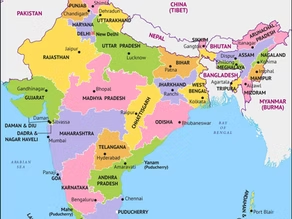
Coronavirus has surely changed how we think about life and how we think about traveling in today’s world but traveling will never really stop and our will to explore new places and culture will never diminish. The virus has somewhat started to decrease its spread and new ways to tackle and prevent its outreach has also come into effect. How we travel will surely change and is changing with new rules and regulations to maintain social distancing. Many states have started accepting tourists from other states. Though traveling will be restricted to the domestic circuit, it will help a lot of states to revive their economy as their main source of income was from tourism. Most of the leisurely travel will now be restricted to road travel by personal cars, buses, or caravans, this means, states that are nearby to each other will see a sharp rise in the tourists flocking in. Many states in India depend on domestic as well as international tourism for their major share of revenue collection. These states have lost a chunk of their revenue due to the Coronavirus and in a bid to make sure that they survive this pandemic, they are opening up borders to some tourists with some states having strict restrictions and some lenient. This blog has everything you’ll need to know about top tourist states in India and how they are tackling against Coronavirus to provide Tourism. 1. Tamil Nadu 2. Maharashtra 3. Uttar Pradesh 4. Karnataka 5. Rajasthan 6. Kerala 7. Goa 8. Uttarakhand 9. Himachal Pradesh 10. Delhi 1. Tamil Nadu The most visited state in India by both Indians and International tourists, Tamil Nadu is famous for the Indian heritage it has to showcase and has the most remarkable temples in the country dating back to 1000 years. The living tradition of culturally relevant music, dance, and art forms makes it a perfect destination for many tourists wanting to explore the roots of India and getting a sense of spirituality. Kanyakumari is one of the most visited cities in Tamil Nadu Traveling to Tamil Nadu: The state of Tamil Nadu has been affected adversely by the coronavirus pandemic. With almost 4 lakh cases and 7,000 deaths, it has recorded the second-highest number of cases in all of the Indian states, staying behind Maharashtra. The state of Tamil Nadu has made it mandatory for anyone trying to come in the state to have an e-pass issued by the local government for tracking each and every tourist that sets foot in the state. They say it will help them keep a record of how these people are affecting the situation of the pandemic and can take future decisions accordingly. Traveling from Tamil Nadu: If you’re living in Tamil Nadu and planning to travel to a different state for an excursion, the safest destination by road, for now, would be Kerala. Kerala has recorded around 60,000 cases till now and the graph has been moving slowly there. Kerala has made it mandatory to have a COVID-19 negative test, a minimum stay of 3 days, and booking of accommodation beforehand to enter the state of you’re a tourist. These are fairly easy if you’re will to trave is really strong. Other states like Karnataka and Andhra Pradesh are seeing a steep incline and can be less safe than Kerala. Check out Kuntala Banarjee’s blog on top places to worship in Tamil Nadu to get a better idea for a spiritual trip. 2. Maharashtra The second-most visited state by foreign visitors coming to India, Maharashtra is famous for having the mesmerizing mountain ranges on one side and the serene coastline on the other. Tourists flourish the state of Maharashtra for its century-old temples, the picturesque western ghats by the side, ancient and rich in heritage forts and palaces, the calming ambiance of the sea, and to witness the industrial advances made in our country. Mahabaleshwar is a popular hill station in Maharashtra that attracts people from all over India Traveling to Maharashtra: Maharashtra has had the majority of the effect of this novel Coronavirus. With over 7 lakhs individuals being affected by the virus and more than 23 thousand deaths, the state was in a state of helplessness at one point. There is still a mandatory e-pass requirement to travel to the state of Maharashtra but it will be lifted by the start of September 1, 2020. The central government had eased the restrictions but the state had stayed with the mandate of e-pass to keep a track of the cases in the state. Traveling from Maharashtra: The safest place to visit if you’re living in Maharashtra would be Goa. Goa has recorded around 15,000 cases in total and the rate of increase is fairly low. For individuals to enter Goa, they need to present their COVID-19 status to the state, in the form of negative COVID test, or go a 14-day home quarantine routine, or they can also opt for a COVID test at the point of entry into the state. Goa government has made it easy for tourists to enter the state. Maharashtra is in close proximity to Gujarat, Telangana, and Karnataka but the spread of the virus is not as controlled as that in Goa. They can be ideal tourist spots but one needs to be really cautious with traveling. Here’s a mini-diary to travel in Mumbai by Parnashree, check it out to read about her awesome journey and recommendations. 3. Uttar Pradesh When it comes to the most attractive place of interest in India, if not the world, the Taj Mahal will surely top the list. Along with the Taj Mahal, there a number of historically important sites in Uttar Pradesh along with numerous religiously significant temples and other pilgrimage sites. Holiest city of Varanasi that sees tourists flock in thousands every day is another
Ultimate Guide to Accommodation in India post-Coronavirus
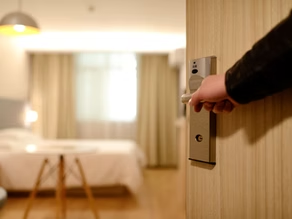
The Coronavirus has made it not only to travel out to any place but the fact that when we look at a new place or a new person, we get that feeling of being scared of catching the virus that our willingness to travel is also gripped. Such an extreme feeling has become really common and the fact that a new place or a new location might have a higher chance of getting a person infected restricts a traveler to even go out of their house. Making this feeling a new normal, traveling to a new place, and staying at that place is going to change for good to push towards safer means of travel. You think you know all about catching Coronavirus? Check this. When we think of staying and sleeping at an accommodation that is not our home, the first thing we think of is how many people have actually been here and used it? Is it really been cleaned after their stay? Or is it even safe from any disease that the person might carry? All of these questions are not just going to be our simple thoughts but a grave concern, a concern that will be needing complete addressing and safety measures that will make sure that these doubts are vanished as quickly as they come inside a traveler’s mind. Leading hoteliers believe that these concerns and risks can be simply taken care of with a few safety precautions and wearing a mask at all times when outside the accommodation. A woman wearing mask the right to stay safe. You can check out the guidelines by the government of India to make face masks at home here and make a mask for all your needs to be safe from Coronavirus. Travel includes staying at a new place(obviously!) and a traveler could have a preference for staying at a posh location that has all the amenities and a person need not even go out of the property to have fun, and a traveler could even have a preference of going with the cheapest closest option to stay for the night or the day and be gone the next morning. However extreme a traveler would want their accommodation preference to be, the coronavirus is set to bring a few changes to all of them. Checking-in to accommodation is the first thing that a traveler has to do to start their stay at a new place. During check-in, there can be several violations of social distancing norms, like touching each other’s documents, handling cash, staying close to the attendant at the reception, standing close to other guests, etc. Having a digital, contact-less check-in will be the new normal in each accommodation, where a traveler will just walk into a hotel and head directly for their room that will be pre-allocated to them before even their check-in. A possible tech-travel solution for this could be, no need to show any documentation or a booking voucher, just QR or bar code on the phone that enables the door and unlocks it for a traveler to enter the hotel premises or the accommodation premises and head straight for their rooms. Think twice before reaching out for the bell! Escalators, lifts, or staircases, which one to prefer? It is pretty much clear that lifts are our worst enemies when it comes to social distancing. Staying in close proximity to a person for longer than 10 seconds is always a factor of risk. So, stairs might be safer than lifts and you can even eliminate the bulk of the threat by not touching anything like the railing or handles and walking at a distance from anyone walking close to you. The common areas like lobby, gyms, pools, spas, etc. will have to be tackled with utmost safety. Since these areas attract a lot of visitors, there is not only a chance of catching the virus from coming in contact with an infected person but from a surface that was in contact with an infected person. These areas will be limiting the number of guests on the floor and ensuring that each area is cleaned off at regular intervals. Swimming pools are much safer when it comes to Coronavirus because chlorine does not let the virus sustain. You can have a chill time at the pool but make sure that there are not a lot of people present and you are still steering clear and swimming at a distance. Although not a lot of hotels have opened swimming pools, it is something to look out for. Swimming pools are not as dangerous as you might think. Eating at a restaurant is going to be a little problematic. Not exactly problematic but very different. There will be a lot fewer customers that would opt to eat out, and even if they do, restaurants need to have a strict policy of how many foodies can even be present at once in the vicinity. The best solution to eating a meal at your favorite restaurant would be to order room service. Sanitizing your hands and eating a meal in your room is the best way to stay safe and eat during a trip when the pandemic is still at large. Getting to the accommodation and checking-in is fine but how do you really stay? Remotes, handles, faucets, toilets, surfaces, room keys, etc. All can carry a potential risk to infect a person from this highly contagious virus. Now we have two options, either you go berzerk and start sanitizing every corner of the room you’ll be staying in, from the handles to the TV, or you make sure that you keep your hands clean every time you want to eat something or do an activity that might involve you touching your face repeatedly. If you’re really paranoid, sanitize the hell out of the entire room. Touching door handles? Better sanitize the hell out of
Ultimate Guide to Transportation in India post-Coronavirus
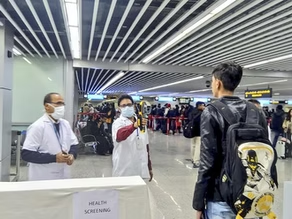
The Coronavirus has surely made us believe that the only constant in life is change, and this change has been life-altering. Every person is now preparing for a post-COVID19 world, a world where safety and survival will be the basic necessities, a world where masks and sanitizers will become more important than water and food, and a world where we’ll think twice before coming in contact with anyone new. It got me wondering how our commute will be different post-COVID, not just daily commute that will be different but how traveling in airplanes and trains will look like? Let’s take a look at how traveling in a post-pandemic world will look like specifically focusing on traveling in India in a post-COVID19 scenario. What a survey of 6000 travelers told us about post-Coronavirus travel The biggest industry when it comes to traveling and transportation is the airline industry. The pre-COVID revenue of the airline’s industry stood at 873 billion dollars in the world, which has now dropped to almost half of it! India had a passenger count of around 160 million in 2017! It’s safe to say that air travel will have the most impact considering the monetary juice it requires to maintain an airline. How will Air Travel in a post-COVID world change? How will the cost of air travel change post-COVID19 is the first thing that comes to our mind. While there is a common misconception that ticket prices are ready to soar, this is not true. Keeping in mind the fact that a traveler will want to choose safety over pleasure, the number of passengers is going to decrease. Not just for leisure, since all the offices have adapted and loved the concept of work from home, business travel will also come down significantly. As a meeting that earlier took hours of traveling and a lot of money can now be easily done by staying at home. Moreover, airlines will have to gain more trust in the travelers and will have to offer huge discounts too. Airport check-in while maintaining social distancing. Digital and Touchless Travel will be the first thing to be implemented in and around the airport and airplane to maintain the norm of social distancing. Digital won’t just mean no physical boarding pass but even the Visa and the Passport might have to go entirely digital to make sure there is no contact between the passenger and the crew at the airport. No peanuts at 35,000 feet anymore. Airlines will stop serving food in the view of Coronavirus being spread through the removal of masks and gloves for eating. So, how will we eat during a flight amidst the Coronavirus? Well, packaged food on airports instead of flight will be the best solution for staying safe. Baggage Sanitizing and screening will become as common as baggage checking. We have already seen some airports in a few countries screen bags using UV rays to check for the possibility of Coronavirus on them. When we think about traveling on an airplane, we never really consider how easy it is to transport our belongings through it but now we’ll miss the days this was true. There might be more checks for baggage and also a restriction on the number of bags each passenger can carry. Travelers with face masks, and shield and crew with PPC. Face masks, shields, and gloves will be the new common while traveling on an airplane. We have had reports of the Indian government making it necessary to wear gloves and masks at airports and have also instructed all the airlines to provide face shields to the passengers. It is a great move by the authorities considering how close a person sits on an airplane. Considering the fact that the middle seat in a flight will not be left empty, having a face mask and shield will have to be necessary. Get ready for Empty Airports and long queues. Airports will have to go a complete overhaul making things work amidst this pandemic. Airports experience maximum footfall as compared to other transportation mediums. At Delhi airport, the busiest airport in India, almost 2 lakhs passengers used to land or depart at the airport. This will change entirely to shift towards empty airports, where people are standing and sitting 3 feet apart, the safe distance for coronavirus. Making the queues long and waiting time high. With passport and boarding pass, health certificates will be a new mandatory document Health checkups and certificates may become mandatory to ensure a smooth flying experience. A temperature gun is not enough to conclude whether a person might be suffering from Coronavirus or not, to make sure we have a process that makes traveling easier in a world where the Coronavirus is like a common cold, airlines and airports can make it mandatory for travelers to have a Coronavirus test done in 7 days and present a certificate for the same for being eligible to travel in an airplane. Airport shops, food courts, and restaurants will dry up and maybe even forced to close to keep this pandemic in check. A major source of revenue for any airport authority, and the reason why early check-ins and coming early to the airport is recommended, are the outlets at the airport. These stores though necessary for the operations of any airport will have to remain shut or operating at minimum capacity. More important than water? Face masks in a vending machine will be very common. Masks, Sanitizers, gloves instead of Pepsi, Lays, Water. Vending machines will change the kind of essentials they process. A lot of travelers will vary from eating or drinking at the airport or even in the flight. Masks, sanitizers, gloves, and other essentials will be the right path to take in order to ensure the safety of travelers, and also generate little sales for the companies. Time to reach the

